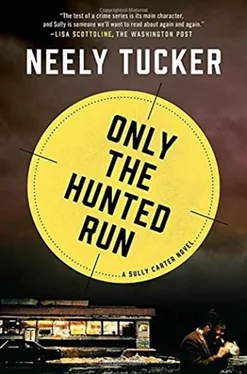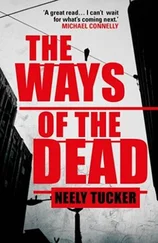Standing in front of him was Jerry, the only employee in sight, sporting a playful smile, hamming it up, still on about pictures this, pictures that. Sully guessed Jerry here was probably giddy just to have another living humanoid to yammer at. Stuck in here all day in a windowless reception room on the eleventh floor, nothing but rows of shelves with medical records behind you.
“We’re talking about the transorbital things? The transorbital lobotomy?” Sully said, cocking an eyebrow. “I think I’m good just-”
“No, no. Man, not those. Those, you can see on the Internet. I’m talking about the pictures.”
“Okay, okay,” Sully said.
“The autopsy ones,” Jerry said brightly. Kid was all but bouncing on the balls of his feet. “Everybody always does.”
“Everybody?”
“Look here,” and Jerry was standing beside him, Mr. Super Helpful, pulling open a file box, knowing right where to look. “Freeman, he was sort of a genius, kind of P. T. Barnum. Absolutely into studying the insane. Research director at St. E’s back in the twenties. He was thinking phrenology at the time, like measuring people’s heads, bumps on them, and it would tell you about their mentality.”
“Is this going to involve bleeding people with leeches?”
Jerry, ignoring him. “But you don’t know how he measured them.”
“I’m guessing this is the point in the story where you show me.”
Jerry pulled out a folder, flipped through it and then slipped a glossy in front of him. At first Sully thought he’d handed him the wrong picture. These were not corpses because they were standing upright. Then his eyes focused and saw they were dead. Naked. Dangling from what appeared to be meat hooks.
“What-”
“Freeman wanted to measure them, but you don’t get violently insane people to sit still, right? So, autopsies. For whatever reason, he wanted to do it with them standing up. So he would get an assistant and they’d put clamps in their ears, like ice tongs? Then they hooked the tongs to a steel cable. That ran on a hydraulic lift to the top of the room. Then they’d turn on the crank and haul them up in the air, like carcasses at the slaughterhouse. They’d swing them over to the wall, see here, where they had this grid, for measurement.”
Sully blinked and looked at the picture again. He took the folder from Jerry, spreading the photographs, dozens of them, across the table. Men and women, white and black. The bodies were misshapen, bloated, twisted from sclerosis, nearly skeletal, arms limp. They hung like puppets. Greasy hair and long beards, thick body hair, sagging breasts, floating penises, spines hunched or legs splayed. But it was the faces that drew him in. Mouths open, eyes finally closed to a lifetime of mental agony, jaws pulled to one side or another as if trying to speak some lost syllable from the land of beyond, gaps in the teeth or missing altogether, the cheeks hollow, tongues lolling. Their ears flattened and pulled up to grotesque angles by the metal clamps.
“I don’t even, what, are all these lobotomies?”
Jerry perched on the edge of the table, already looking in another box, pulling out more files. “No, no. Lobotomies were later. But Freeman? He still loved him some pictures. Here.”
These were eight-by-ten portraits of men and women looking into the camera. Black-and-white images, some of them smiling, some not, some blank and seemingly unaware they were being photographed.
“These, now, are the before and after lobotomy portraits. The man did his documentation.”
“He worked here, that’s how you guys wound up with his stuff?”
“Yes. No. He had his own clinic in town. He was a researcher at St. E’s. Later on, he was an adjunct or an associate here at G.W. I never can remember. Freeman and his partner, a surgeon, did the first lobotomy in the United States, right here at G.W. Then everybody did. Yale. Johns Hopkins.”
“Yale did lobotomies?”
“Sure. This was cutting-edge stuff, man. This was the nineteen forties, the early fifties. Before Thorazine? The best you could do with paranoid schizophrenics, the catatonically depressed-and I mean, for, like, all of recorded history-was warehouse them. This was a big step up from demonic possession. Doctors back then, they fell over themselves, congratulating each other on being so humane. St. Elizabeths was its own village. People stayed for twenty years, forty. Hydrotherapy, wrap them in warm towels, let ’em play in the dirt. Then, shazam, the lobotomy! Schizophrenics calmed down. The violent became manageable. Well, some of them. A lot went home as drooling vegetables. A lot of them died.”
“This, this is… I don’t even know.” He was still looking at the portraits.
Jerry bounced a pencil on the desk, off the eraser, and caught it. “Is it? What do we do with brain cancer patients today? Targeted radiation. Destroy part of the brain in the hope of saving the rest of it. Patients know that radiation, chemo, is going to make their hair fall out and make them spew vomit like Linda Blair, and they’ll pay for the privilege. It’s the best thing money can buy. It’s the best science can offer. And if you don’t? You die right now. So it’s not that much different, you think about it.”
Sully shook his head. “I guess. I mean-”
“The prefrontal lobotomy, the guy who thought of that? Awarded the Nobel Prize. It was very dramatic, very invasive. They partially shaved the head, drilled the skull open in several places. That’s your prefrontal lobotomy. But Freeman, our boy Walter? He knew that the skull was weakest right at the top of the eye socket. You could get through that by hitting an ice pick with a hammer, then-don’t look at me like that-then waggle it back and forth, and cut the nerves. He could do in ten minutes, in his office. Knocked you out with a jolt of electroshock, wham wham, and you were done. No more shaved head, full anesthesia, power drills.”
Sully sat up, tapping the desk. “Wait wait-you said ‘ice pick.’”
“Sure. That was the transorbital. His big contribution to science. It was like a fad. You know, like when Prozac first came out and everybody you knew started taking it?”
“Ice picks.”
“Look, no disrespect, you don’t seem to be getting this. Some lobotomized patients left the asylum, went back to work, their families. A little diminished, a little flat, but they were home. This hadn’t happened before. Like, in recorded history. Astounding. The miracle cure. It was on the cover of magazines, of science journals. Even JFK’s sister was lobotomized.”
“The ice pick is-”
“Rosemary. I thought everybody knew this story. She had some mild mental disability. It got worse when she was at a convent school, here in Washington. She was sneaking out, as I recall, and there was some concern she’d wind up pregnant. Joe, the old man, thought Freeman was a genius. Lots of people did. So Joe sent her over to Freeman for a transorbital, there in his Connecticut Avenue office. It went bad. Rosemary was mentally destroyed.”
“You’re saying the sister of a sitting president of the United States had a doctor drive an ice pick into her brain and people were surprised it didn’t turn out well.”
“John, he wasn’t president then. This was in the early 1940s. I think. But yes. Freeman went in above the eyeball, under the eyelid. See?” He leaned forward, pushing his eyelid up to display the fleshy strip above it, then let go, blinking. “He was trying to sever the connections between the medial thalamus and the ventromedial part of the frontal lobes. Cut the cords and voilà! No more crazy emotions! Just a quick tap up through the eye sockets. That was how you could recognize the recently lobotomized-they had huge black eyes. The way people with chemo now go bald, like that. He would give them sunglasses. A parting gift.”
Читать дальше








![Джон Макдональд - The Hunted [Short Story]](/books/433679/dzhon-makdonald-the-hunted-short-story-thumb.webp)



